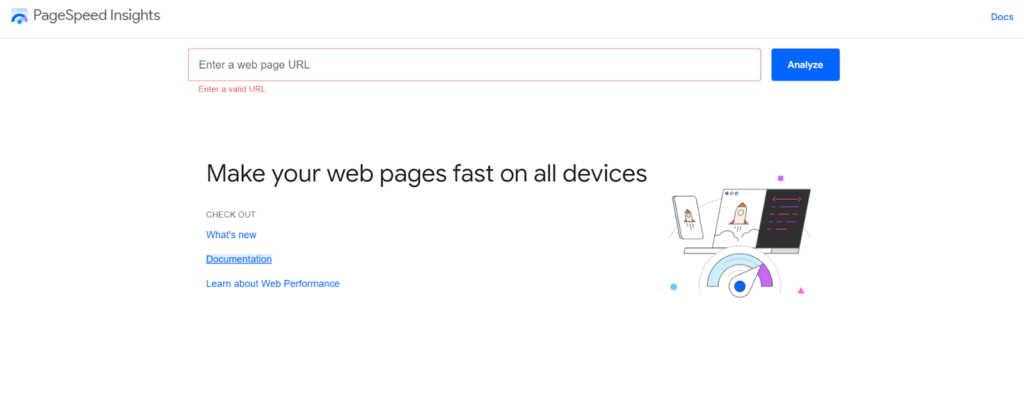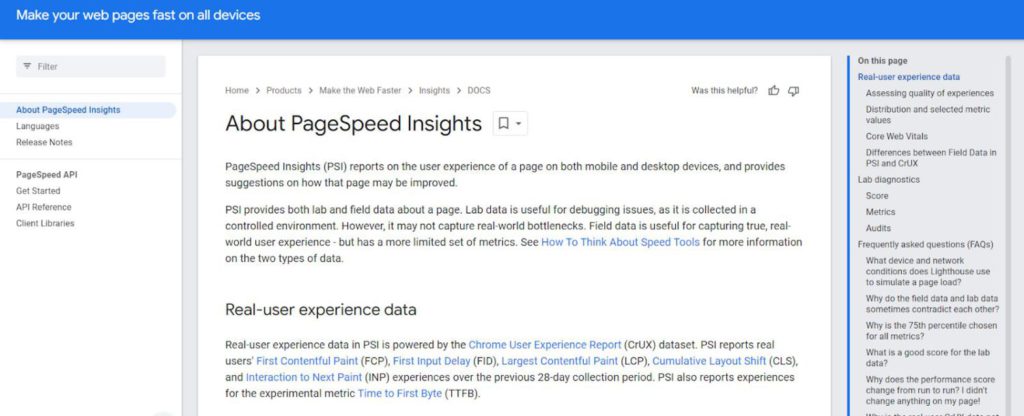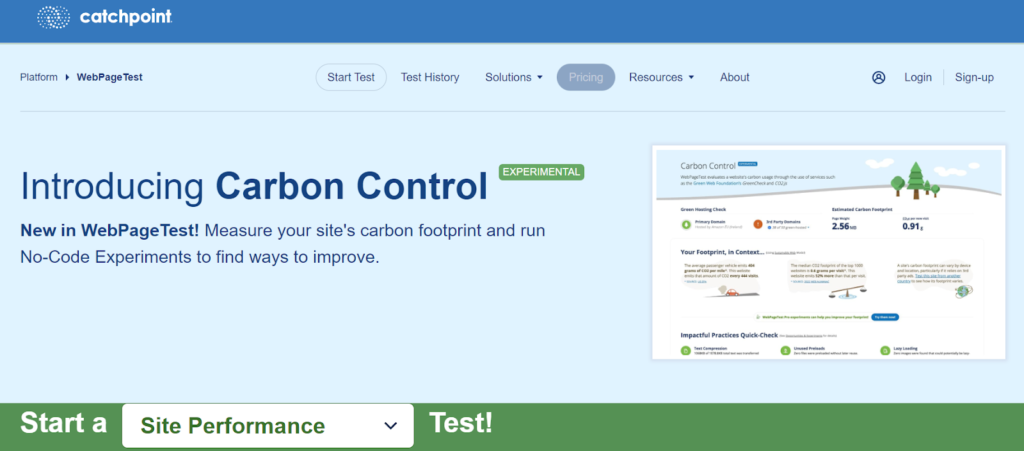Website Performance Testing Tools and Services are tools and solutions designed to assess and measure the performance of a website or web application. These tools help in evaluating various aspects of a website’s performance, such as speed, responsiveness, load time, and overall user experience. The primary goal is to identify bottlenecks, optimize performance, and ensure that the website delivers a fast and seamless experience for users.
Table of Contents
Why is Website Performance Testing important?
Website Performance Testing is crucial for several reasons. It helps identify bottlenecks and performance issues, ensuring that a website delivers a fast and seamless experience for users. Improved performance leads to higher user satisfaction, better search engine rankings, and increased conversions.
How does Load Testing differ from other types of Website Performance Testing?
Load Testing specifically focuses on evaluating a website’s performance under various levels of user load and concurrent traffic. It helps determine how well a site can handle a large number of users simultaneously accessing its pages.
How often should Website Performance Testing be conducted?
Website Performance Testing should be conducted regularly, especially after significant updates or changes to the website. Regular testing ensures that performance remains optimized over time and helps catch any issues that may arise due to updates or increased traffic.
Is Website Performance Testing only for large websites?
No, Website Performance Testing is relevant for websites of all sizes. Whether a site is large or small, performance issues can impact user experience and business outcomes. Testing helps identify and address these issues, regardless of the website’s scale.
How can Website Performance Testing impact SEO?
Website performance is a crucial factor in search engine rankings. Search engines like Google consider page speed and user experience as ranking factors. Optimizing website performance through testing can positively influence SEO and improve overall visibility in search results.
Can Website Performance Testing Tools be integrated into the development process?
Yes, many Website Performance Testing Tools offer integrations with popular development and continuous integration tools. This allows developers to incorporate performance testing into their regular development workflow, catching issues early in the development process.
Also Check ➤ ➤
Top 50+ Best Content Marketing Tools and Apps 2023
Top 10 Website Heatmaps & Behavior Analytics Tools
20 Best SEO Tools | Level UP your GAME NOW! 2023
Key features and aspects of Website Performance Testing Tools and Services include:
- Load Testing: Simulates user traffic to evaluate how a website performs under different levels of load and concurrent user activity.
- Speed and Page Load Time Testing: Measures the time it takes for web pages to load and identifies opportunities for optimization.
- User Experience Monitoring: Monitors and analyzes the overall user experience, including page rendering, interactivity, and responsiveness.
- Resource Utilization Analysis: Examines how web resources (such as images, scripts, and stylesheets) are utilized and suggests improvements for efficiency.
- Mobile Responsiveness Testing: Evaluates how well a website performs on various mobile devices, ensuring a positive experience for mobile users.
- Diagnostics and Reporting: Provides detailed reports and diagnostics to highlight performance issues and suggest recommendations for improvement.
- Benchmarking: Compares a website’s performance metrics against industry benchmarks or competitors.
- Scalability Testing: Assesses how well a website can handle increased load and traffic as the user base grows.
Popular Website Performance Testing Tools and Services include Google PageSpeed Insights, GTmetrix, Pingdom, WebPageTest, Apache JMeter, and various others. These tools play a crucial role in maintaining a high-quality online presence, as website performance directly impacts user satisfaction, SEO rankings, and overall business success.
Trading Enthusiasts? Do Check ➤ ➤ CoinCodeCap Signals Blogs
The Main Agenda – Website Performance Testing Tools and Services

Google PageSpeed Insights


Google PageSpeed Insights is a web performance testing tool provided by Google. It is designed to analyze the performance of web pages on both mobile and desktop devices. The tool generates a performance score based on various metrics, such as page load times, time to first byte (TTFB), and rendering speed. PageSpeed Insights offers suggestions for optimizing web pages to enhance their speed and user experience. One unique aspect is its integration with the Google Chrome User Experience Report, providing real-world performance data. Additionally, it categorizes suggestions as either “Opportunities” or “Diagnostics,” making it easy for developers to prioritize improvements.
Pros:
- Integration with real-world data from the Chrome User Experience Report.
- Provides actionable insights with specific recommendations for optimization.
- User-friendly interface with clear categorization of suggestions.
- Offers performance scores for both mobile and desktop versions of websites.
Cons:
- Limited in-depth diagnostic information compared to some other tools.
- Some recommendations may require technical expertise to implement effectively.
Also Read ➤ ➤ Best “Who Called Me From This Phone Number” Free Lookup Companies | Claim a Stress Free Day NOW!
GTmetrix

GTmetrix is a comprehensive web performance testing tool that provides detailed insights into a website’s speed and performance. It uses both Google PageSpeed and Yahoo YSlow metrics to generate a performance score. GTmetrix allows users to test their websites from different geographic locations and various connection speeds. One unique feature is the Waterfall Chart, which visualizes the loading of each element on a web page, aiding in identifying bottlenecks. GTmetrix also offers historical reports, enabling users to track performance changes over time. With its user-friendly interface and clear grading system, GTmetrix is a valuable tool for developers and website owners striving to optimize their sites.
Pros:
- Waterfall Chart for visualizing loading patterns and identifying performance bottlenecks.
- Multiple test locations and connection speed options for comprehensive testing.
- Historical reports to track changes in performance over time.
- Provides specific recommendations for improving website speed.
Cons:
- The free version has limitations on the number of test locations and advanced features.
- Some advanced features may require a premium subscription.
Also Read ➤ ➤ 10 Best Customer Experience Management Software | DELVE NOW!
Pingdom

Pingdom is a widely used website performance monitoring tool that offers insights into the speed and availability of websites. It allows users to test their websites from various geographic locations and provides detailed reports on performance metrics such as page load time, performance grade, and the number of requests. Pingdom offers real user monitoring (RUM) to understand how actual users experience a website. Additionally, it provides uptime monitoring to alert users in case of website downtime. One unique feature is the Waterfall Chart, which visually represents the loading of different page elements, aiding in pinpointing performance bottlenecks. Pingdom’s user-friendly interface, customizable alerts, and historical data make it a valuable tool for ensuring website reliability and optimal performance.
Pros:
- Real-time monitoring of website performance and uptime.
- Waterfall Chart for visualizing the loading of page elements.
- Customizable alerts for immediate notification of performance issues.
- Multiple test locations to assess global performance.
Cons:
- Some advanced features may require a premium subscription.
- The free version has limitations on the frequency of tests and test locations.
Also Read ➤ ➤ 10 BEST Discord Voice Changer Software | DIVE into WORLD of MEMES NOW!
WebPageTest

WebPageTest is an open-source website performance testing tool that allows users to analyze the speed and performance of their web pages. It provides detailed insights into various performance metrics, including load time, time to first byte (TTFB), and rendering speed. WebPageTest supports testing from multiple locations and devices, offering a comprehensive view of a website’s performance under different conditions. One unique aspect is the ability to simulate various network conditions, such as 3G or 4G connections, to assess how the website performs in different scenarios. WebPageTest provides visualizations like filmstrips and video captures of the page loading process, aiding in identifying areas for improvement. With its flexibility, detailed reporting, and open-source nature, WebPageTest is a preferred choice for developers and performance enthusiasts seeking in-depth insights into website speed.
Pros:
- Open-source and free to use, making it accessible to a wide range of users.
- Comprehensive performance metrics, including filmstrips and video captures.
- Ability to simulate different network conditions for thorough testing.
- Detailed waterfall charts and optimization recommendations.
Cons:
- The interface may be less user-friendly for beginners.
- Some features may require technical expertise to fully utilize.
Also Read ➤ ➤ Top 10 User Authentication Service | The ULTIMATE PROTECTOR for YOUR DATA!
Apache JMeter

Apache JMeter is an open-source, Java-based performance testing tool developed by the Apache Software Foundation. It is designed to analyze and measure the performance of web applications, databases, and other services. Apache JMeter provides a user-friendly graphical interface that allows testers to create test plans and scenarios for simulating various user interactions with a web application. Testers can design and execute load tests to assess how a system performs under different conditions, such as high user traffic or varying network speeds. One notable feature of JMeter is its extensibility, as it supports plugins and can be integrated with other tools and frameworks. Additionally, JMeter can generate comprehensive performance reports and graphs, helping users identify performance bottlenecks and optimize their applications.
Pros:
- Open-source and free to use, making it accessible to a wide user base.
- Supports various protocols, including HTTP, HTTPS, JDBC, FTP, and more.
- User-friendly GUI for test plan creation and execution.
- Extensible through plugins, allowing users to customize and enhance functionality.
- Detailed performance reports and graphs for effective analysis.
Cons:
- Steeper learning curve for users new to performance testing.
- Limited support for JavaScript-based interactions in web applications.
- Resource-intensive for very high loads; may require additional configurations for scalability.
Blockchain Developers?
Do Check ➤ ➤
Blockchain Developers – Everything you need to know
Developers In Crypto #2
10 Best Crypto API for Developers
Best AI APIs For Developers 2024
Conclusion
In conclusion, Website Performance Testing Tools and Services play a pivotal role in maintaining a high-quality online presence by ensuring optimal website speed, responsiveness, and overall user experience. These tools offer a range of features, including load testing, speed and page load time analysis, user experience monitoring, and scalability testing. Regular performance testing is essential for identifying bottlenecks, addressing issues, and optimizing websites for improved user satisfaction and search engine rankings.
Each tool discussed—Google PageSpeed Insights, GTmetrix, Pingdom, WebPageTest, and Apache JMeter—brings unique strengths to the table. Google PageSpeed Insights stands out with its integration of real-world data, while GTmetrix provides a detailed Waterfall Chart for visualizing loading patterns. Pingdom offers real-time monitoring and alerts for immediate issue notification. WebPageTest, being open-source, provides comprehensive insights into performance metrics and allows simulation of different network conditions. Apache JMeter, with its extensibility and graphical interface, facilitates in-depth performance testing and analysis.
Despite their unique advantages, each tool has its limitations, such as the learning curve associated with Apache JMeter or the free version limitations of GTmetrix. It’s crucial for users to choose a tool based on their specific needs, considering factors like user-friendliness, the depth of analysis required, and the budget available for premium features. By integrating these tools into the development process, developers can proactively address performance issues, resulting in a faster, more reliable, and user-friendly online experience.









